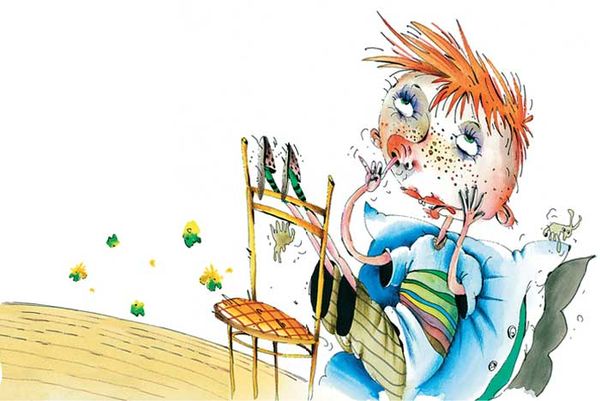Topaz stone magical properties suitable for anyone. Pink topaz
Pure topaz, like pure corundum, is transparent and colorless. A wide range of colors that exist is possible either due to natural traces of impurities, or due to defects in the crystal structure. Color diversity is also brought about by industrial improvements. can be found in colors such as yellow, orange, brown, red, blue, pink, blue, purple and green.
The most common colors of the untreated mineral are pale yellow, brown, and gray. Pastel shades of light green, purple and pink are also found. Since these colors are rarely vibrant, they are processed to achieve more exciting colors.
Colorless
Colorless topaz is quite common, sometimes it is given a diamond cut, and it is sold instead of diamond. Indeed, one of the most famous gemstones in the world is the colorless topaz, which was originally thought to be a diamond. It is a 1,680-carat stone known as the Braganza Diamond, owned by the royal family of Portugal. The gem seems to have disappeared after the death of King John VI in 1826.
Blue
The most popular color is blue. Indeed, blue crystal is one of the best-selling jewelry stones in the United States. The combination of brilliance, radiance and clarity at a very attractive price makes it an excellent value.
However, blue topaz is extremely rare in nature, and then only in the form of a very pale blue color. The striking shades that you will find on the market are the result of widely used methods of improvement, usually this is irradiation, accompanied by heating. These methods allow you to get a dark blue with a slight green tint color, known as London blue; very deep saturated, known as Swiss blue; and bright blue, known as azure. It is them you most often can meet in.
Pink
The most valuable color is orange to pink, known as imperial topaz. The exact shade is not clearly defined, so a wide range of golden orange, peach and pink are sold under this name. Some light pink precious colors are the result of heat treatment.
Hot pink topaz is the result of another improvement method - a high technical process known as thin film displacement. The technology involves applying an extremely thin metal layer of only a few microns thick. This layer changes the optical properties of the material.
A thin metal film is applied to the lower half of the gem so that interesting color effects are reflected through the crown. The film at the molecular level connects to the stone, becoming part of the crystal. The color scheme is practically unlimited and includes hot pink, color electrician and mystic topaz.
Blue
The mineral does not occur in nature in such a deep color that can be found on the market today. Blue topaz in nature is really very rare and actually has a very pale color. The bright blue color available on the market is obtained by irradiating white topaz or by exposure to high temperatures. The color change is constant and stable, but recently there have been disputes about the safety of this processing method for the consumer.
There are several different irradiation methods that are used to obtain blue topaz. Due to residual radioactivity, the irradiated mineral must be kept in a safe room for a certain period of time before it can become possible to heat, reduce and polish it. This time varies from several weeks when applying the “linear accelerator” method to several years when irradiated in a nuclear reactor.
In August 2007, the US Nuclear Regulatory Commission independently tested 9 batches of irradiated blue topaz, an average of 500 carats each, and admitted that such a crystal was not a health hazard.
Smoky Topaz and Quartz
From time to time on the Internet, there is information about a gem called smoky topaz. Scientists claim that such a mineral does not exist. People are surprised to hear this because smoky topaz is widely advertised. How can this be?
The answer is that some dealers sell smoky quartz - an attractive but inexpensive stone under the name of a more expensive one. This is not only dishonest, but also does not pay tribute to smoky quartz, which is an interesting and unique gem in itself.
The demand for smoky quartz then rises and falls with fashion. Recently, he was very popular in his natural tones. Since it is very inexpensive and easy to find in large sizes, it is widely used as pendants. This translates into innovative cuts, as well as cabochons and carvings. Throughout history, smoky quartz has been the material used for the crystal balls of fortune-tellers; and part of the mysticism of this distinctive quartz seems to be preserved to this day.
Natural rutile topaz and quartz
Limonite is a completely different mineral than rutile. Rutile is titanium dioxide and has an extremely high refractive index; significantly higher than that of diamond. Limonite is not a true mineral, but consists of a variable mixture of hydrated iron oxide minerals such as goethite and lepidocrocite. Limonite usually has a typical tan color and is used as the basis for the natural ocher pigment.
Thus, to call topaz rutile is wrong. It is clear that the name came from an obvious resemblance to the more well-known rutile quartz, but survived when more accurate information reached the market. One of the reasons is that no one suggested a more accurate name that would be acceptable to the market - obviously, stained with limonite did not catch on.
If you compare most of the different samples of rutile topaz and rutile quartz, you can see many differences. In rutile quartz samples, the needles are arranged in larger and denser groups, which is more characteristic of quartz. Topaz has large areas of transparency with rarer and finer inclusions. Both are equally attractive in their own way.
Beautiful and amazing stone - pink topaz. It symbolizes purity, sublimity, innocence and romance. This stone can play a very important role in the relationship of man and woman.
 Stones of this color are very rare in nature. The bulk of the crystals that are mined from underground have a faded yellow-brown or milky-gray color. Therefore, finding a pink stone is a great success for minerologists. Topaz of this color is very sensitive to sunlight, therefore, in the light, its color quickly fades and the stone can become colorless within a week. To consolidate the effect, all stones undergo at least minimal heat treatment. Otherwise, jewelry with topaz will soon become unattractive. That is why topaz is considered an evening stone. It shines with all shades in the rays of artificial light. Its amazing color will delight the owner for many years.
Stones of this color are very rare in nature. The bulk of the crystals that are mined from underground have a faded yellow-brown or milky-gray color. Therefore, finding a pink stone is a great success for minerologists. Topaz of this color is very sensitive to sunlight, therefore, in the light, its color quickly fades and the stone can become colorless within a week. To consolidate the effect, all stones undergo at least minimal heat treatment. Otherwise, jewelry with topaz will soon become unattractive. That is why topaz is considered an evening stone. It shines with all shades in the rays of artificial light. Its amazing color will delight the owner for many years.
 Red topazes are even more rare. Bright stones of intense intense red color are only of natural origin. No heat treatment is able to give topaz such a depth. A gold ring with red topaz will cost a lot of money. Therefore, such instances rarely go on sale - they are immediately bought up by collectors.
Red topazes are even more rare. Bright stones of intense intense red color are only of natural origin. No heat treatment is able to give topaz such a depth. A gold ring with red topaz will cost a lot of money. Therefore, such instances rarely go on sale - they are immediately bought up by collectors.
Natural pink color also costs a lot of money. A 1-carat gem will cost about $ 500. Checking the natural origin of the stone is not difficult, but it is better not to experiment, but to pay attention to its cost. If a stone left in the sun fades after a week, then its color is natural. Unfortunately, it will be impossible to return to its original form. Unlike such topazes, stones that have passed the magnetron sputtering procedure are very resistant to ultraviolet radiation. When reprocessed, it can return the lost color.
Topaz jewelry is a wonderful talisman gift for Sagittarius, Lviv, Scorpions. manifest carefully. This stone is able to improve the mood of its owner, establish spiritual harmony and balance, sharpen intuition. The variety of jewelry with topaz will allow you to choose the most beautiful and suitable thing for any woman.
A bracelet with topaz surrounded by diamonds will be an impressive gift for a mature woman. Like a ring with topaz, this masterpiece of jewelry will not leave indifferent any lady. Silver is best presented to a young girl. Even in combination with inexpensive cubic zirconias, pink topaz will shine with all the colors of the rainbow, recalling the sincere feelings of a loved one.
Pink topaz has a delicate, refined beauty and unique energy properties. This stone is equally loved by jewelers and contemporary connoisseurs of the beautiful. Jewelry with pink topazes is very feminine and romantic, they bring freshness and charm to the images of their happy owners.
In addition, this stone has a positive effect on the mental and physical condition of a person. Let's look at the properties of pink topaz in more detail - what kind of mineral it is, how best to wear it and what opportunities it has.
Description and Features
Pink topaz is a semi-precious mineral, the delicate color of which depends on the impurities of chromium and the characteristics of the crystal structure. It must be said that natural pink topazes are quite rare, and therefore are highly valued. On average, a natural stone of this shade can have a price of five hundred dollars per carat. The brighter and richer the color, the higher the price. Also, the cost depends on the size of the stone and the presence of any defects.
In numerous photos, pink topazes appear in a variety of shades, sometimes very bright and colorful. Most often, the stones are subjected to heat treatment to obtain beautiful flowers. From yellowish or colorless minerals, in this way it is possible to make pink (does it need to be said that heat-treated topazes are cheaper than natural ones). But even the natural pink topazes in the photo look much brighter than their natural color - they are usually also processed to fix the color or make the shade more beautiful. In addition, natural pink topaz in the sun is able to lose its color, and with the help of heat treatment it is made more resistant to sunlight.
Jewelry
Jewelry with pink topazes is considered more feminine, as delicate colors are a classic designed exclusively for lovely ladies. However, stones with more restrained and colder shades of pink look great on men's accessories.
For example, cufflinks with pale pink topazes perfectly enliven the suit of a modern business man, and the energy properties of these stones are useful in business and career. The brighter and richer colors of the minerals harmoniously combine with red and yellow gold, and the gentle and cold with silver, white gold and platinum.
Often there are photos of pink topaz in the neighborhood with colorless stones - precious, semi-precious, ornamental and simply artificial. So, these minerals perfectly “coexist” with diamonds, rock crystal, zirconium and Swarovski crystals, bringing a peculiar zest and a certain romantic charm to the jewelry. Jewelry with elegant pink topazes organically fit into the images of different styles - everyday, business, holiday and evening. They successfully emphasize the beauty of women of all ages - young girls, mature women, elderly ladies and the smallest girls.
Energy properties
These stones have healing properties, primarily for the human psyche. They help to overcome stress, strengthen the nervous system, help get rid of depression and insomnia. Ancient doctors advised people with an unstable psyche and even a mentally ill to wear pink topaz jewelry. The energy of the mineral strengthens the immune system, helps fight viruses and colds. It is also believed that this stone promotes healing after poisoning.
For love
The mineral helps in matters of the heart - establishes harmony between lovers, reduces the risk of cooling and betrayal. He is able to return the fading passion and fervor of relations, gain the disposition of the offended “half”, and establish peace after conflicts and quarrels. Women, from time to time wearing jewelry with this stone, significantly extend their youth, beauty and attractiveness. Men with a stone become strong and successful, which makes them very attractive to women.
For inner harmony
Pink topaz has the ability to harmonize our internal state. It pacifies, raises the mood, arouses interest in life, helps to survive grief. Mineral energy develops intuition and clarity of thought, helping to see things in their true light and saving from illusory fears. The stone aggravates joyful emotions, and negative emotions - softens. It charges us with vivacity and energy, but at the same time it calms anger, anger and irritation.
For business
It is believed that pink topazes attract us to the location of superior persons - leaders, teachers, large investors, etc. The energy of the mineral helps to see additional career opportunities and to show oneself worthy. The stone gives its owner the wisdom and tranquility necessary for making the right decisions, as well as eloquence and charm, helping to convey ideas to people around. However, pink topaz does not like intrigue and dishonesty - it is ready to help in achieving success, but not at the expense of deception, intrigues and ugly actions.
Who is better to wear
Astrologers recommend wearing this stone to the signs of the fire element - Leo, Aries, Sagittarius. Pink topaz will emphasize and enhance the best qualities of the signs of Fire - their activity, mind, vitality, inner strength and powerful energy. At the same time, he will give them wisdom, thanks to which fire signs can weaken the negative aspects of character, such as temper, vanity and egocentrism. The mineral can be worn by Gemini - it will help the air sign to calm emotions and make it easier to focus on the right things, help not to spray and become more disciplined.
Pink topaz will help Scorpio to establish relations in the family, will give worldly wisdom, prudence and balance. In addition, men and women of Scorpions, wearing this stone, gain amazing attractiveness in the eyes of the opposite sex. Also, this mineral is good for Cancers - it will make them less vulnerable and more sociable, help to develop and realize creative abilities. In general, pink topaz will come in handy for any sign in times of tension, stress and anxiety.
Helpful information
- Pink topaz is notable for its high hardness, but its structure is prone to cracking. In this regard, jewelry with this stone should be protected from bumps and other mechanical damage.
- The mineral must not be exposed to prolonged exposure to sunlight, otherwise it will inevitably fade and as a result it will lose its color, turning into a bluish-gray stone. This is especially true for natural minerals - thermally treated topazes are more resistant to sun exposure, but also turn pale.
- The stone should not be subjected to sudden changes in temperature, and also - you should not wear it constantly (it is better to wear it from time to time in suitable cases).
- If you are in a bad mood, have a headache, or simply have not had a good day, meditate on pink topaz, considering its shades and the play of light from different angles of view. You will feel a surge of energy, and at the same time - peace and tranquility.
Topaz is an almost perfect stone. Good hardness and color combined with affordability makes it one of the most popular gemstones. The most valuable colors of topaz are golden, orange-yellow (imperial topaz), dark pink-red and orange-red. The deeper the shades of these colors - the more expensive the stone. However, the most commonly used topazes in jewelry are blue. Since about the middle of the last century, blue topaz has become very popular in the market of precious stones and since then almost all such stones have been irradiated and subjected to heat treatment. Therefore, under the influence of heating or even sunlight, they can lose an intense blue color.
Topaz is an island aluminum silicate with fluorine; impurities of iron, chromium, titanium, and vanadium are possible.
First described by Henkel J.F. (1737).
Origin of the name: Topaz is named after the first find - the island of Topazios (Topazion, now Zabargad (Zeberged)) in the Red Sea or from the Sanskrit "popas" - fire. Regarding the island, the information found is contradictory - for some authors the Greeks named the island because they found topaz there, for others - that the stones were called topaz because of the name of the island. (There is a little about the island in an article on chrysolites. It is possible that the stones that were mined there were not topazes.)
Other names: heavyweight (the old name of the Ural miners, due to the large specific gravity of this stone).
Syngonia: rhombic.
Color: colorless, blue, yellow, gray, white, greenish, pinkish, red, purple, brown, polychrome. Studies of the cause of topaz staining showed that it has a radiation nature and is due to deviations from ideal parameters in the crystal lattice. Topazes of yellow-brown hues can to some extent lose their color in the event of prolonged exposure to direct sunlight. From exposure to radiation, on the contrary, colorless differences acquire an intense wine-yellow to orange-brown color, which upon subsequent heating turns into blue.

Topaz, sapphires, diamonds
Shine: glass.
Hardness: 8
It is steady against external influences, does not dissolve in acids.
Special properties: topaz is decomposed by phosphoric salt.
Sometimes in the crystals of topaz, the phenomenon of pleochroism can be observed.

Topaz in various colors
Topaz forms well-formed prismatic and tabular crystals, radially radiant and thin-plate aggregates (pycnite), very confluent masses and cryptocrystalline formations. Topaz crystals are sometimes large, with finds weighing up to 60-80 kg.
Origin
Topaz is formed as a magmatic mineral in pegmatites and granites, and also as a hydrothermal mineral in greisens, rhyolite cavities, and quartz veins.

The largest and most famous topaz deposits are: Afghanistan, Brazil, Germany, Namibia, Norway, Pakistan, Russia, the USA, and Ukraine. Stalk aggregates of pycnite (a variety of topaz) are common in the Czech Republic.
In many countries, topaz is mined from placer deposits.
During the XVIII - XIV centuries. and until the middle of the 20th century, the largest number of topaz finds was recorded in the Southern Urals, in the Ilmensky Mineralogical Reserve. Currently, the deposits are almost depleted.
Until recently, a large number of wine-yellow, blue and two-color zoned topazes were extracted along with beryl along with the extraction of piezoelectric quartz raw materials in the mines of the Volodarsk-Volynsky pegmatite field (Ukraine). Volyn topazes were of very high quality and often reached extremely large sizes: for example, in 1965 a wine-yellow crystal weighing 117 kg was discovered in one of the mines. The Volynsk deposit is unparalleled in the abundance, beauty and quality of the crystals mined there, from there come the outstanding beryls and topazes that adorn the expositions of all museums in the world. And in the local museum of precious and decorative stone, among other things, well-known name stones are stored - “Academician Fersman” (14x8x8 cm, weight 2.107 kg., Polychrome tea-blue-blue color with a few snow-white “umbrellas” of fluorite inclusions scattered in the depths of the stone) , "Golden Polessye", "Rodnichok", "Tale. Currently, the Volyn field is mothballed, but far from exhausted.

"Academician Fersman"

Pink topaz, aquamarine, diamonds
Topaz is mainly used as a gem for making jewelry.
Beautifully colored transparent topazes are relatively inexpensive stones. They lend themselves well to faceting. Typically, medium-sized topazes are subjected to diamond cutting, sometimes a diamond top and step bottom, and the platform can be rounded. Topaz is perfectly polished, acquiring a dazzling shine. Due to perfect cleavage when cutting topaz, great care must be taken so that defects do not occur.
Very rarely, topazes are with the effect of a cat's eye and they are also rarely treated in the form of a cabochon.
Topazes are often confused with rauchtopaz (a widespread inexpensive smoky variety of quartz) because of the similarity of names, although upon careful examination they have very different shades, hardness, gloss, and easily differ in specific gravity (topaz is much heavier).
Topaz is a reference mineral in the mineral hardness scale (Mohs scale).

Pink Topaz and Diamonds
Laboratory studies of topazes by spectroscopic methods made it possible to understand the nature of their color, thanks to which a technology for the artificial coloring of crystals was developed. Under the action of ionizing radiation, colorless topazes turn brown-orange.
Natural or artificial radiation (a stream of elementary particles of a certain energy), passing through the crystal lattice of topaz interacts with it. The effect of radiation on the mineral can be expressed in the heating of the crystal, the breaking of individual chemical bonds, the redistribution of free electrons between the lattice ions and impurities, and the formation of short-lived isotopes. Thus, irradiation of a mineral removes its crystalline structure from energy equilibrium and, thus, contribute to the formation of defects within the structure and active color centers.
To enhance the color of natural topazes, two types of radiation are usually used: electronic and neutron. Topazes irradiated with an electron gun acquire a blue color similar to the best color natural finds. According to the commercial color classification, such stones are called “Aqua Blue”. Under neutron irradiation in the reactor, topazes acquire a deeper blue-blue color, sometimes with a weak greenish tint. This color is called "Ice Blue". Similar in color, natural bluish-green stones irradiated in nature are called Saxon Chrysolites.


With the exception of imperial (imperial) topaz, all variety of names and trade names were invented by dealers in the jewelry trade. These names are widely used at present; also topazes are combined into subgroups in shape or color.
Nitrogen is an orange-pink topaz with a rainbow effect. Color is given by applying a thin metal layer to the stone. The name received from the company, the first to use this method of "ennoblement" - Azotic.
Imperial - shining golden orange-yellow, orange-brown or orange-pink topaz.
London blue is a topaz with a deep sky blue color, darker than Swiss blue.
Mystic is a multi-color topaz with a rainbow effect, which is obtained, like the first type of topaz, when a thin metal film is applied to the surface of a stone.
Rutile topaz is a topaz with yellow needle-like inclusions of the mineral limonite. This stone is very similar to rutile quartz, hence the name. However, it is not entirely true, because rutile quartz has inclusions of the rutile mineral, and in topaz it is a different mineral.
Cherry - topaz from light orange-brown to brownish-pink.
Silver is a colorless topaz, synonymous with white topaz.
Swiss blue - sky blue topaz, lighter than London.
White is a colorless topaz.


Imperial topazes, diamonds Garnets, topazes

Orange citrine in color often resembles topaz. Some unscrupulous sellers easily use fake names when selling citrines to sell them more expensive. With the exception of imperial topazes, other orange topazes with various names are almost always heat-treated citrines. Here are some names:
Bahia topaz is the false name for citrine.
Brazilian topaz - may mean topaz from Brazil, but often - the name citrine.
Citrine topaz, gold topaz, false topaz, Indian, royal, Madeira, Spanish, topaz quartz - citrine is also hidden under these names.
Oriental topaz - yellow or orange sapphire.
Smoky Topaz - Dark Brown Smoky Quartz.
Star topaz is a yellow star sapphire.

Imperial topazes, rubies, diamonds

Jasper, garnets, topazes, diamonds

Topaz, diamonds, sapphires, tsavorite, tourmaline
Many unique examples of topazes deservedly went down in history. Topazes are world-famous in such famous products as: the Gizella Upper necklace (10th century), Irina Godunova's crown (17th century), 1,680-carat colorless round-cut Topaz Braganza in the Portuguese royal crown (also known as “Big Diamond”, since it was mistakenly considered a diamond for a long time). One of the rarities of the Diamond Fund is the old Spanish Order of the Golden Fleece with five large (3.3x2.4 cm) oval-shaped Brazilian topazes of soft purple color.

As we have already found out with Margarita, there are several Golden Runes) with different stones)
A faceted crystal of blue topaz from Brazil, stored at the Museum of Natural History in Chicago, weighs 5.890 carats. The collection of minerals of the British Museum of Natural History contains two crystals of topaz, notable for its faceting. The first is a step-faceted stone of a square shape, without flaws, blue, weighing 614 carats from Brazil. The second stone is a larger, colorless, oval diamond cut, without flaws, weighing 1,300 carats.And topaz decorations:













Next time we'll talk about chalcedony.
About the beautiful without embellishment. Our many faces
Today we’ll talk about gems very popular all over the world - about Topaz. And - about the "topazes" too. Topaz is perhaps the most common and most used gem for jewelry (not counting the ubiquitous diamonds of course).
For starters - general information about topazes.
Brief gemological information.
Color spectrum: colorless, blue, yellow, green, pink, red, orange, brown.
Refractive Index: 1.629 - 1.637
Chemical formula: AL (F, OH) 2SIO4
Hardness: 8
Density: 3.52 - 3.56
Type of crystal lattice: prismatic
Main deposits: Brazil, Sri Lanka, Nigeria, Germany, Austria, Switzerland, Australia, Japan, Russia, Ukraine, Ireland, Canada, Zimbabwe. Non-deposits have been explored in more than 20 countries, but the estimated reserves of the material are considered insufficient for industrial development.
The natural color of yellow, green, blue and brown topazes is due to electronic color centers, and the color of red and pink topazs is due to chromium impurities. Orange topazes are colored both due to electronic color centers and chromium microimpurities simultaneously. The less impurities of chromium, the more light slides into yellow.
Topaz is an aluminosilicate mineral with inclusions of fluorine and / or hydroxyl anions. Hydroxyl topases are much more rare, a significant excess of the concentration of hydroxyl on fluorine leads to an increase in the refractive index, bringing it closer to the maximum possible value.
In appearance, the color of topaz can be confused with aquamarine, green and yellow varieties of beryl, with zircon, citrine, peridot and even sapphire. Topaz is easily distinguishable from all these stones in its optical characteristics. With appatite, andalusite, danburite and tourmaline, which are also able to “pretend” to be topazs in color, the optical characteristics of topaz intersect. In this case, the simplest method of identification will be the use of refractive fluid (methylene iodide) for the test on the "drowning" of the stone. Due to its higher density, the topaz in methylene iodide will sink, the rest of the false topaz variants will float on the surface layer.
Topaz is synthesized, but until recently, synthetic material has not found commercial use. Since 2007, synthetic orange, yellow and pink corundums produced by the method of sublimation (deposition) from the gas phase began to go on sale in the local markets of Minas Jeyras in Brazil under the guise of topaz.
Topazes in the history of modern civilization ..
In the list of historically significant stones, topaz occupies a single line. But in terms of the importance of this line, the mysteriousness of its history, the most famous topaz in the world is one of the clear leaders. The "Braganza" diamond, a huge colorless (according to some sources, with a very faint blue overtone) free fantasy cut stone weighing (according to various sources) from 1600 to 1900 carats. The diamond, which claimed to be the largest diamond in the world at that time, turned out to be a topaz!
The first mention in the official chronicles of the “Braganz diamond” dates back to 1797, when the stone was presented to the future King of Portugal John VI during the ceremony of introducing him as Prince Regent. Later, in 1807, already becoming king, John was forced to leave with his whole family and court to Brazil for a long 14 years, fleeing the occupation of Portugal by Napoleon Bonaparte's troops. According to legend, in 1818, in Rio de Janeiro, John ordered the manufacture of a new crown, during which he discovered the true mineral essence of the famous stone.
Whether the new crown was completed or not, whether the topaz “Braganz diamond” was installed in it is not known for certain. No one has ever seen this crown, no one has ever mentioned that he saw a stone after the death of King John VI in 1826. "Braganza Diamond" disappeared without a trace! The royal crown stored in the Lisbon Museum of the Palacio Nacional da Ajuda is made of gold without the use of any gemstones.
Such rather big topazes.
Nature gave topaz the ability to grow very well! Large topazes are not uncommon ... Among the faceted topazes, as many as ten stones weigh more than 3 thousand carats. The largest officially registered topaz in the world is called "Topaz El Dorado", stored in Brazil and weighs 31,000 carats!

Topaz "El Dorado"
The largest blue topaz in the world with natural color - light blue "Brazilian Princess" square emerald cut weighs 20005 carats!
And the largest blue topaz of a very saturated color, it could be attributed to the Topaz Swiss group, occupies the 7th place in the world by weight among all faceted topazes. Topaz "Azuli", its second name is Topaz "Marbella":
Red topazes hundreds of times rarer than pinks! It is impossible to give topaz a red color by conventional refinement methods, heat treatment and irradiation. The cost of natural red topaz is calculated in four-digit numbers per carat. Such stones practically do not enter the free market, and it is safe to say that all the modern red topazes offered for sale went through magnetron sputtering of the ink film.
Numerous "Imperial" topazes - bright yellow, yellow-orange, red-orange - were born like this in nature .. But - at times less saturated. Their color can be pulled up to a “decent” heat treatment, but the result of this procedure is not always predictable - pink topazes can also turn out. Unprocessed saturated imperials prevail on the market, their cost is low .. They are not respected in the gemological and jewelry environment, there are also few lovers on them .. It is only important to keep in mind that under the guise of Imperial topaz bottle glass is often sold either ( in the best case) - superheated, formerly near-colorless, quartz, from which for one reason or another it was not possible to make either amethyst or citrine ..
Colorless topazes.
Perhaps the only variety of topaz does not raise doubts about the naturalness of its "color". Colorless topazes cannot retain their colorlessness either during heating or during irradiation .. If you have a product with colorless topaz, do not keep it in the sun for a long time, do not go to the beach to sunbathe. It can become very cloudy .. Colorless topazes almost never fake - rock crystal is even more expensive! The jewelery value of colorless topaz was widely recognized in only one country in the world - in the USSR.
Historical reference.
The oldest written mention of the thermal treatment of topazes dates back to the 1st millennium BC! A certain Greek learned to make topazes, which today we would call sky blue or suisse. He boiled the first in olive oil, and the second he annealed them wrapped in grape leaves in clay.













